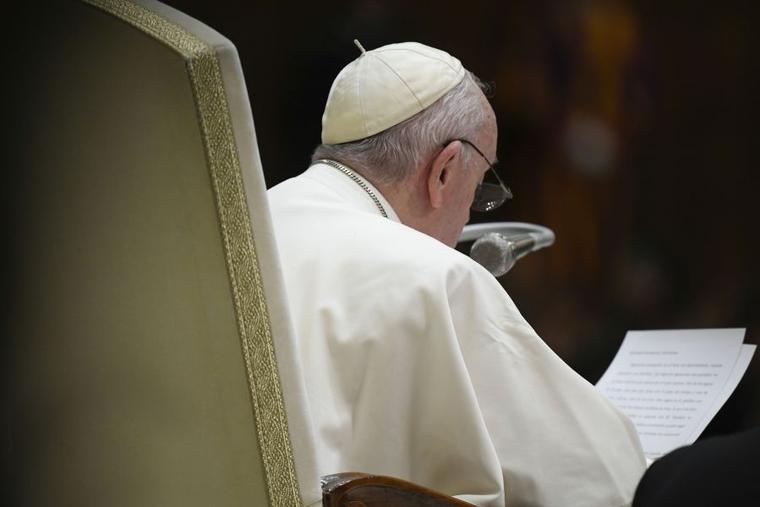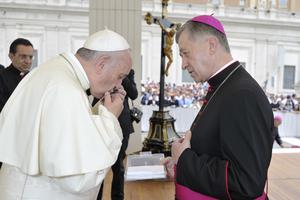Like a Row of Dominoes: An Analysis of the Latest Vatican Appointments
Many observers expect Pope Francis to announce appointments by the end of the year.

VATICAN CITY — As with a row of dominoes — where the fall of the first triggers a chain of consequences — the latest appointment at the Vatican kicks off several changes for the Church, both in Rome and around the world.
Father Emilio Nappa’s nomination to assistant secretary of the dicastery for the Evangelization of Peoples is the first of a series of new appointments at the Vatican. They involve the most important dicasteries of the Roman Curia — and will also have a global impact.
Father Nappa is called to take the place of Archbishop Giampietro Dal Toso, both as assistant secretary of the dicastery and president of the Pontifical Mission Societies. Archbishop Dal Toso left his office after five years and after just over 25 years in the service of the Roman Curia, which he had entered in 1996 as an official of the then Pontifical Council Cor Unum.
Following the principles of Praedicate evangelium, Pope Francis did not renew his appointment after the five-year mandate.
Instead, the Pope chose a priest already in the service of the Roman Curia, where he served first as an official of the General Affairs section of the Secretariat of State. In September, Father Nappa was briefly made an official of the Secretariat for the Economy.
Father Nappa is, in other words, an internal choice: a young priest with good diplomatic-administrative experience and a stint in the field of economics who is now expected to help manage the Pontifical Mission Societies.
For Archbishop Dal Toso, there is talk of a future as a nuncio, a “papal ambassador” — even though he is not a trained diplomat.
Archbishop Dal Toso’s missionary experience could be helpful, and the Vatican needs nuncios: There are several vacant nunciatures, and in several places the nuncio is advanced in age. For example, Cardinal Mario Zenari in Syria is almost 77 years old. The vacant nunciatures of Venezuela, Jordan, or the Central African Republic need a missionary charism.
Archbishop Protase Rugambwa, secretary of the Dicastery for the Evangelization of Peoples, is also awaiting a new assignment: He has completed his five years in that position.
Previously, the Tanzanian — who entered the service of the dicastery in 2002 — served five years as the assistant secretary and president of the Pontifical Mission Societies.
Archbishop Rugambwa is likely the next nuncio to the United Kingdom, a position left vacant by another archbishop without a prior background in diplomacy: Claudio Gugerotti, who, after several years as “ambassador of the pope,” was recalled to Rome as prefect of the Dicastery for the Eastern Churches.
The changeover should take place in mid-January.
These “dominoes” constitute a reshuffle of the Dicastery for Evangelization — the Vatican department formally presided over by the Pope himself.
The dicastery’s two pro-prefects have not yet been named. Cardinal Luis Antonio Tagle and Archbishop Rino Fisichella currently perform their functions. However, both prelates are officially referred to by their titular seat, not the official title — a clear indication that a nomination is needed.
While Archbishop Fisichella is expected to stay, Cardinal Tagle, recently removed from the leadership of Caritas Internationalis, is said to be awaiting a new assignment in the Curia. The cardinal is considered a likely contender for the position of prefect of the Dicastery for Bishops or even the Dicastery for the Doctrine of the Faith.
It is the overall uncertainty of the situation of the reforms in Rome, as well as the sometimes sudden decisions by Pope Francis, that fuel speculation and rumors about the future role of Cardinal Tagle and others.
Many observers expect Pope Francis to announce appointments by the end of the year. For now, the signs of a change are all there. The pontiff appears committed to limiting appointments to five years and implementing a broad generational change.
However, only history will tell how effective these “rows of dominoes“ will be.
- Keywords:
- vatican appointment













